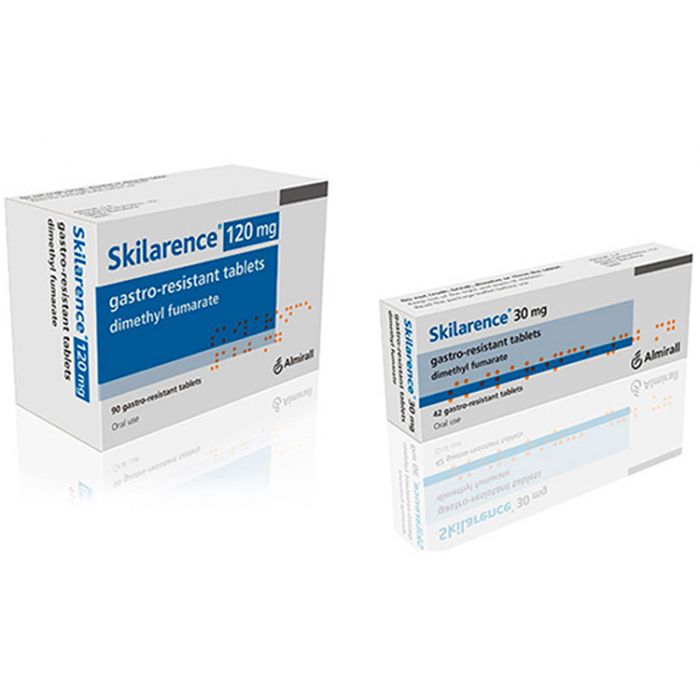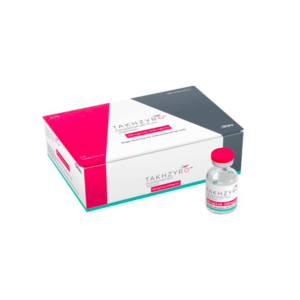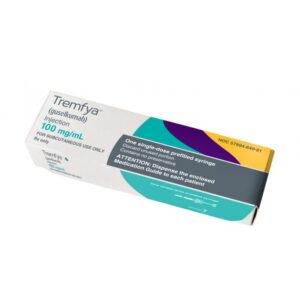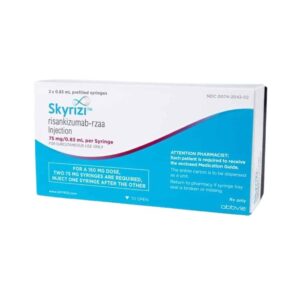Skilarence (dimethyl fumarate) for sale – Buy Skilarence (dimethyl fumarate) online
What is Skilarence (dimethyl fumarate)?
Skilarence (dimethyl fumarate) is an immunomodulator indicated for the treatment of psoriasis[1]. The same active ingredient, dimethyl fumarate, is indicated for the treatment of multiple sclerosis[4].
Who is Skilarence (dimethyl fumarate) for?
Skilarence (dimethyl fumarate) is for patients with moderate to severe plaque psoriasis for whom treatments applied direct to the skin do not work well enough[1].
How does Skilarence (dimethyl fumarate) work?
Psoriasis causes the body’s immune system (defence mechanisms) to be overactive and attack its own cells. The active substance in Skilarence, dimethyl fumarate, reduces T cells (a type of white blood cell that forms part of the immune system) and thereby reduces the activity of the immune system. In this way, it prevents the T cells from producing substances that cause inflammation and lead to psoriasis[2].
Where has Skilarence (dimethyl fumarate) been approved?
Skilarence (dimethyl fumarate) was approved for the treatment of patients with moderate to severe plaque psoriasis by:
-
European Medical Agency (EMA), European Union, June 23, 2017[2].
Please note that this medicine may have also been approved in other regions than the ones we’ve listed. If you have a question about its approval in a specific country feel free to contact our support team.
How is Skilarence (dimethyl fumarate) taken?
It is recommended to begin treatment with a low initial dose with subsequent gradual increases[1].
The standard dosage is:
-
Week 1: 30 mg (1 30 mg tablet) once daily
-
Week 2: 30 mg (1 30 mg tablet) twice daily (1 tablet in the morning and 1 in the evening).
-
Week 3: 30 mg (1 30 mg tablet) 3 times daily (1 tablet in the morning, 1 at midday and 1 in the evening).
-
Week 4: 120 mg daily ( 1 120 mg tablet) once daily (in the evening)
-
Week 5: 120 mg (1 120 mg tablet) twice daily (1 tablet in the morning and 1 in the evening).
-
Week 6: 120 mg (1 120 mg tablet) 3 times daily (1 tablet in the morning, 1 at midday and 1 in the evening).
-
Week 7: 120 mg (1 120 mg tablet) twice per day ( 1 tablet in the morning and 1 tablet at midday), and 240 mg (2 120 mg tablets) once per day (2 tablets in the evening)
-
Week 8: 240 mg (2 120 mg tablets) twice per day ( 1 tablet in the morning and 1 tablet in the evening), and 120 mg (1 120 mg tablet) once per day (1 tablets at midday)
-
Week 9+: 240 mg (2 120 mg tablets) 3 times per day (2 tablets in the morning, 2 at midday and 2 in the evening).
If a particular dose increase is not tolerated, it may be temporarily reduced to the last tolerated dose[1].
If treatment success is observed before the maximum dose is reached, no further increase in dosage is necessary. After clinically relevant improvement of the skin lesions has been achieved, consideration should be given to gradual reduction of the daily dose of Skilarence to the maintenance dose required by the individual[1].
Warning: Skilarence (dimethyl fumarate) might reduce the number of white blood cell and thus facilitate infections.
Complete information about Skilarence (dimethyl fumarate) dosage and administration can be found in the official prescribing information listed in our references section[1].
Note: Please consult with your treating doctor for personalised dosing.
Are there any known side effects or adverse reactions of Skilarence (dimethyl fumarate)?
Common adverse reactions
The most common adverse reactions listed in the prescribing information include[1]:
-
alterations in blood counts: lymphopenia, leukopenia, eosinophilia, leukocytosis
-
decreased appetite
-
headache
-
paresthesia (an abnormal sensation, typically tingling or pricking)
-
gastrointestinal disorders (diarrhoea, abdominal distension, abdominal pain, nausea, vomiting, dyspepsia, constipation, abdominal discomfort, flatulence
-
skin and subcutaneous tissue disorders (erythema, skin burning sensation, pruritus)
-
general disorders (fatigue, feeling hot, asthenia)
-
increased hepatic (liver) enzymes.
Serious adverse reactions
The serious adverse reactions listed in the prescribing information include[1]:
-
acute lymphatic leukaemia (very rare)
-
pancytopenia (deficiency of all three cellular components of the blood) (very rare)
-
infections
Use in specific populations
Skilarence (dimethyl fumarate) can be fatal for a fetus, it is advised to avoid pregnancies and breastfeeding[1].
For a comprehensive list of side effects and adverse reactions please refer to the official prescribing information[1].
References
1. Summary of Product Characteristics [EMA]: Skilarence (dimethyl fumarate) [PDF],
Almirali, June 2017.
2. EMA. Skilarence (dymethyl fumarate)
www.ema.europa.eu, (last update: 27/09/2017), cited on: 25/06/2018.
3. Chow C., et al. Comparison of three methods for measuring psoriasis severity in clinical studies(Part 1 of 2): change during therapy in Psoriasis Area and Severity Index, Static Physician’s Global Assessment and Lattice System Physician’s Global Assessment.
J Eur Acad Dermatol Venereol. 2015 Jul.; 29 (7):1406–1414.
4. EMA. Tecfidera (dimethyl fumarate)
www.ema.europa.eu, (last update: 10/01/2018), cited on 26/06/2018.







Reviews
There are no reviews yet.